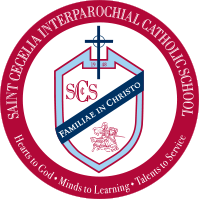Categories
- Curriculum (12)
- Family (10)
- Healthy Kids (10)
- Home to School Connection (39)
- International Baccalaureate (11)
- Middle School News (3)
- Music & The Arts (2)
- Parenting (18)
- Pre-K Program (11)
- Public v Private School (9)
- Reading (5)
- Scholarships (1)
- Summer (6)
- Technology (7)
Recent Posts
- Creative Leadership Activities for Middle School Students
- How Private School Education Prepares Your Children for Adulthood
- The Many Benefits of Extracurriculars for Middle School Students
- Education For All: Step Up For Students Now Offers Scholarships Regardless Of Income
- More Than ABCs and 123s: The Benefits of a Christian Preschool
Archives
- March 2024 (2)
- January 2024 (1)
- December 2023 (1)
- October 2023 (1)
- September 2023 (1)
- July 2023 (1)
- June 2023 (1)
- May 2023 (2)
- March 2023 (1)
- January 2023 (1)
- October 2022 (1)
- July 2022 (2)
- June 2022 (2)
- May 2022 (1)
- March 2022 (1)
- February 2022 (1)
- January 2022 (1)
- December 2021 (1)
- November 2021 (2)
- October 2021 (1)
- September 2021 (1)
- August 2021 (1)
- July 2021 (2)
- June 2021 (2)
- March 2021 (1)
- February 2021 (1)
- December 2020 (1)
- November 2020 (1)
- October 2020 (1)
- August 2020 (1)
- July 2020 (1)
- June 2020 (1)
- May 2020 (1)
- February 2020 (1)
- December 2019 (2)
- November 2019 (3)
- October 2019 (1)
- September 2019 (2)
- August 2019 (3)
- July 2019 (3)
- June 2019 (1)
- May 2019 (1)
- March 2019 (4)
- February 2019 (4)
- January 2019 (8)
- December 2018 (4)
- October 2018 (4)
- September 2018 (3)
- July 2018 (1)
- June 2018 (2)
- March 2018 (1)
- October 2017 (3)
- September 2017 (2)
- August 2017 (3)
- July 2017 (3)
- June 2017 (2)
- May 2017 (4)
- April 2017 (4)
- March 2017 (2)
- February 2017 (1)
When Is the Best Time for a Child to Learn a Second Language?

We live in a global community, with electronics and the internet connecting us more closely than ever before. Our communities are no longer contained within neighborhoods or cities but consist of millions of people throughout our country and countries all over the world. Foreign language skills are more important now than they’ve ever been before.
Many parents find themselves thinking about how nice it would be for their children to learn a foreign language. But what age should they start learning? Is there such a thing as being too young to learn? Should you wait until they’re older? But how old is too old? Today, we’d like to share with you the recommended age for children to start learning a foreign language and ways you can help them learn at home.
What Age Should A Child Learn a Foreign Language?
While there is no set age that is considered the ideal for learning a second language, experts agree on one thing: the earlier the better. While it may seem surprising, children are able to start learning a second language alongside their native language as early as three or four years old. This is because 50% of the ability to learn is developed by age four.
Research conducted by Dartmouth College1 revealed that the brain changes after the teen years. This is one of the reasons it is so challenging for adults to learn a new language. Children, however, are able to recreate new sounds and adopt pronunciations more easily. In fact, the younger the learner, the more quickly they tend to pick up new sounds and words. In addition, children are not filled with the self-doubt that tends to plague older learners. They are not afraid to mispronounce a word or worried about being embarrassed if they make a mistake. Learning is simply a less stressful activity for young children than it is for teens and adults. This goes a long way when it comes to learning a new language.
Benefits of Learning a Foreign Language
Children who learn a foreign language have been shown to have higher test scores than children who do not learn a foreign language. In fact, research from Harvard University2 has shown that children who learn a second language at a younger age benefit from the following:
- Enhanced Creativity
- Enhanced Critical Thinking Skills
- Stronger Memorization Skills
In addition to the academic advantages of learning different languages, children also benefit through:
- Learning empathy for others
- Developing a curiosity for different cultures
- Career opportunities down the road
The benefits of learning different languages while young will stay with your children throughout various stages of their lives and give them an edge in a culturally diverse workplace.
Ways to Help at Home
As a parent you may wonder what you can do at home to help encourage your child to learn a second language. There are many means of incorporating foreign language into your routine in a fun, interactive way. For example, many bookstores and libraries have a section of children’s books in other languages, such as Spanish or French. Many of these books have English text alongside or underneath the foreign text. Children don’t have to understand all of the words in order to follow the story. They can learn the words for girl, boy, dog, toy, etc. just by associating the pictures they see with the foreign language words.
Other fun methods of incorporating foreign language into your routine include:
- Playing music and songs in another language
- Labeling things around the house like tables, chairs, etc. in another language
- Fun role playing/ make believe games using foreign names and words
It is natural for young children to be curious. They are always learning, observing the world around them and taking things in. Including fun foreign language activities at home is a great way to help your kids learn a new language and gain exposure to a new culture.
Is Your Child Ready to Learn a New Language?
There is no easy answer to this question. Some children will be ready to learn new languages and will pick up new languages faster than others. The staff at Saint Cecelia are prepared to help your children learn new languages and develop an appreciation for diversity and various cultures. If you would like more information about what foreign language programs are taught at Saint Cecelia School, please feel free to contact us.
About St. Cecelia’s Second Language Program
Kindergarten – 2nd Grade
The Kindergarten through Second grade students’ format of instruction at this grade level is called “FLEX” (Foreign Language Experience or Exploratory). The main goal is to provide students with a foundation for foreign language study. This includes introducing basic sounds and phrases in order to sharpen listening skills and familiarize students with the notion that thoughts can be expressed in another language. Kindergarten through Second grade students attend Spanish class once per week for 30 minutes.
3rd & 4th Grade
Third and Fourth grade students’ format of instruction is called “FLES” (Foreign Language in the Elementary School). FLES programs focus less on the teaching of grammar, and more on the development of listening and speaking skills and on cultural awareness.
5th Grade
Spanish is offered at this level, one time per week throughout the school year. The main focus of the class is to introduce students to vocabulary, pronunciation, basic conversation and culture.
6th – 8th Grade
Sixth and Seventh students are offered Spanish three times per week throughout the school year. Eighth grade classes meet four days per week for a full class period. The main objective of the class is to aid the students in developing proficiency in listening, reading, speaking and writing skills.
Sources:
1. “The Best Age for Kids to Learn a Second Language” Parent.co https://www.parent.co/the-best-age-for-kids-to-learn-a-second-language/ ↩
2. “The Best Age for Kids to Learn a Second Language” Parent.co https://www.parent.co/the-best-age-for-kids-to-learn-a-second-language/; “Enhancing and Practicing Executive Function Skills with Children from Infancy to Adolescence” Harvard.edu http://developingchild.harvard.edu/wp-content/uploads/2015/05/Enhancing-and-Practicing-Executive-Function-Skills-with-Children-from-Infancy-to-Adolescence-1.pdf↩

About Us
St. Cecelia Interparochial Catholic School (SCS) offers an academically challenging and globally minded interdisciplinary education to children in PreK-3 through 8th grade.
Contact Us
1350 Court Street
Clearwater, FL 33756
Phone: 727-461-1200
Fax: 727-446-9140
Admissions: 727-461-1207
Extended Day: 727-385-4851
(3:30-6:00pm)
Quick Links
© Copyright 2015 Saint Cecelia Interparochial Catholic School. Website designed and developed by BayshoreSolutions.


Leave a Reply
You must be logged in to post a comment.